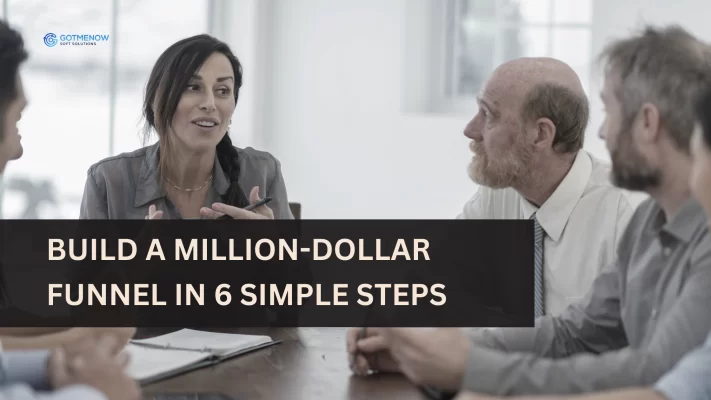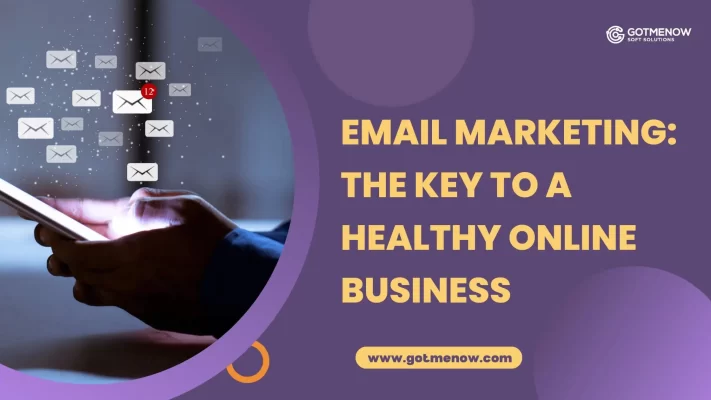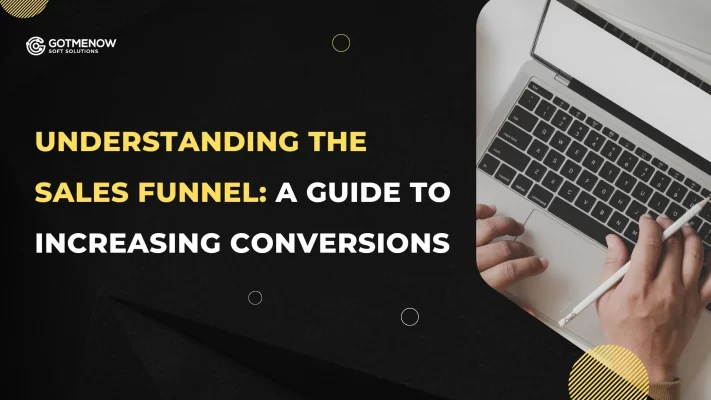How to Create a Simple 6-Step Marketing Funnel that Generates Millions of Dollars
How to Create a Simple 6-Step Marketing Funnel that Generates Millions of Dollars Table of Contents What is a Marketing Funnel? Before we get started, let’s first talk about what a funnel actually is in the marketing world. A funnel refers to the journey a lead takes as they interact with your brand, starting from being completely unaware of you and what you offer, to becoming a paying and repeat customer at the bottom of the funnel. The touchpoints between these stages make up the structure of your funnel. There are many different frameworks for creating funnels, ranging from simple to complex. In this blog, we will focus on a very simple sales funnel that I used in my business for the first four years, which generated over a million dollars in my first year alone. The Biggest Misconception in Marketing One of the biggest misconceptions in marketing today is that in order to grow, you need a fancy funnel. Many people believe that they need complex structures with upsells, downsells, and retargeting campaigns to succeed. However, I’m here to tell you that the messaging behind your marketing is what truly makes the biggest impact. If your funnel isn’t working, it’s likely because your messaging is falling flat. So, instead of focusing on building a complex funnel, focus on fixing your messaging. By doing so, you can have a simple funnel that forms the foundation of your entire business. The 6-Step Marketing Funnel Step 1: Traffic The first step in your marketing funnel is to drive traffic to your content or website. This can be done through various methods such as organic traffic via SEO, content marketing, social media, affiliate marketing, sponsored traffic, or paid ads. Don’t worry if you can’t afford to run paid ads right away. In fact, in the first year of my business, I didn’t spend a single cent on paid ads. I built my business organically through my social channels and YouTube videos. So, focus on generating attention and increasing the number of eyeballs on your content. Step 2: Landing Page Once you have attracted some attention, it’s time to turn those visitors into leads. Instead of immediately asking them to buy from you, invite them to join your email list. Offer them something valuable, such as a checklist, cheatsheet, guide, webinar, or workshop, in exchange for their email address. Creating a compelling call to action is crucial at this stage. Make sure your offer provides value and helps your audience move closer to their desired goal. By capturing their email address, you can continue to build a relationship with them and move them through your funnel. Step 3: High-Value Lead Magnet Your lead magnet should be highly valuable and solve a problem for your audience. It should offer next steps that encourage them to go deeper into the funnel and engage more with your brand. There are numerous lead magnet options to choose from, including checklists, cheatsheets, guides, webinars, workshops, and more. Whatever you choose, make sure it delivers valuable content and requires an email address for access. Step 4: Indoctrination Emails Once someone joins your email list, it’s time to nurture them through a series of indoctrination emails or welcome emails. These emails should provide valuable and relevant content to build trust, desire, and awareness. Instead of hard selling, focus on educating your prospects about who you are, what you stand for, and why you’re uniquely qualified to help them. Show them that you understand their challenges and obstacles, and offer solutions that can benefit them. Step 5: Sales Emails After indoctrinating your leads with valuable content and building trust, it’s time to introduce your product or service. Send a series of sales emails that educate your audience about the benefits of your offer, showcase social proof, stack the value, overcome objections, and create a sense of urgency or scarcity. Each sales email should have a clear call to action that links back to the final part of your funnel, where your leads can convert and make a purchase. Read More: Email Marketing: The Key to a Healthy Online Business Step 6: Sales Page The final step of your marketing funnel is the sales page. This is where you present your offer and turn your leads’ interest into desire and action. A well-crafted sales page can boost your conversion rates and ultimately generate revenue for your business. There are many sales page formulas available, but I have found a 10-step formula to be consistently effective. This formula includes 10 conversion triggers that build trust, boost authority, and ignite sales. If you’re interested, you can grab a free copy of my checklist with these triggers. Frequently Asked Questions Q: Do I need a fancy funnel to succeed in marketing? A: No, having a fancy funnel is not necessary for success. The messaging behind your marketing is what truly matters. Focus on fixing your messaging, and you can have a simple funnel that generates great results. Q: Can I still use this funnel if I can’t afford to run paid ads? A: Absolutely! Running paid ads is not a requirement for implementing this funnel. You can achieve excellent results by generating organic traffic through various other methods. Q: How can I create a compelling lead magnet? A: Creating a compelling lead magnet involves offering something highly valuable for free. It should solve a problem and provide next steps for your audience. Consider using checklists, cheatsheets, guides, webinars, or workshops as lead magnets. Q: What should I include in my indoctrination emails? A: Your indoctrination emails should focus on building trust, desire, and awareness. Share who you are, what you stand for, and most importantly, show that you understand your audience’s unique challenges and obstacles. Q: How many sales emails should I send? A: I recommend sending a minimum of 6 sales emails. Each email should serve a specific purpose, such as introducing your offer, educating on its benefits, showcasing social proof, stacking the value,
Read MoreEmail Marketing: The Key to a Healthy Online Business
Email Marketing: The Key to a Healthy Online Business Table of Contents Introduction In today’s digital age, email marketing has become an essential component of any successful online business. By building an effective email funnel or sequence, you can create a powerful income stream on autopilot. However, many people find the task of writing their email funnel overwhelming and daunting. They struggle with knowing where to start, what to do, and how to measure its effectiveness. But fear not! The process of making money through email marketing is simpler than you think. In fact, I have been using the same email funnel for almost a decade with great success. In this blog, I will share four simple steps that will help you build a profitable email funnel, regardless of your niche or topic. These steps are easy to follow and will pave the way for a consistent stream of income. So, let’s dive in! Step 1: Add Value The first step in building your email funnel is to add value to your audience. This is crucial because it establishes your credibility and builds trust with your subscribers. Before diving into selling, you need to provide them with valuable content that exceeds their expectations. This can be done in a variety of ways. One option is to offer additional free content on the thank you page. For example, you can provide an extra guide, video, or bonus piece of content that they were not expecting. This surprise addition will not only make them feel special but also increase their goodwill towards you. Another way to add value is through the emails you send them. Whether it’s the moment they receive the lead magnet or the first email they get after joining your list, make sure to provide them with valuable and practical information. Share your best tips, tricks, and insights related to their interests or pain points. By overdelivering on value, you will set yourself apart from the competition and leave a lasting impression on your audience. Step 2: Sell Sooner Than You Think Contrary to the conventional advice of establishing a relationship before selling, it is important to start selling sooner than you think. The reason behind this is lead decay. The longer someone is on your email list, the less likely they are to convert into a customer. Therefore, it is crucial to capitalize on their initial excitement and interest in your brand by pitching your product or service early on. While it is recommended to add value for the first two days, by day three at the latest, you should transition to a sales pitch. This doesn’t mean bombarding your subscribers with sales pitches left and right. Instead, it means strategically introducing your product or service and highlighting its benefits. Remember to focus on solving their problems or meeting their needs. By presenting your product or service as a solution, you increase the likelihood of conversion. Step 3: Sell Often Not everyone on your email list will open every single email you send. People are busy and have limited attention spans. Therefore, it is important to assume that they will miss some of your pitches. To counteract this, you need to sell often. By pitching your product or service multiple times throughout the email funnel, you increase the chances of catching their attention and sparking their interest. Aim to pitch at least three times during the opening sequence. This will give your subscribers multiple opportunities to buy and ensure that they don’t miss out on your offer. Remember, repetition is key when it comes to marketing messages. People need to hear about a product or service multiple times before making a purchase decision. By providing them with multiple opportunities to buy, you increase your chances of conversion. Know More: Email marketing and beyond Step 4: Repeat with Multiple Products If you have multiple products, it is important to repeat the same steps for each one. After the initial email funnel, give your subscribers a short break and then start the process again with a different product. This allows you to cater to different needs and preferences within your audience. By offering a variety of products, you increase the chances of conversion and maximize your revenue potential. FAQ Have you already written out your email funnel? If you have already written out your email funnel, congratulations! You are on the right track to building a profitable online business. However, if you are facing any challenges or frustrations, feel free to share them in the comments below. I am here to help! Are you doing an email funnel? If you are currently implementing an email funnel, I would love to hear about your experiences. Whether you have encountered challenges or achieved great success, share your story with the community. Your insights and experiences can inspire and guide others on their journey towards building a profitable email funnel. Know More: Understanding the Sales Funnel: A Guide to Increasing Conversions Conclusion Building a profitable email funnel doesn’t have to be complicated or overwhelming. By following these four simple steps, you can create a powerful income stream on autopilot. Remember to add value, sell sooner than you think, sell often, and repeat the process with multiple products. With consistency and strategic planning, you can turn your email list into a valuable asset for your online business. So, what are you waiting for? Start implementing these steps today and watch your income grow!
Read MoreUnderstanding the Sales Funnel: A Guide to Increasing Conversions
Understanding the Sales Funnel: A Guide to Increasing Conversions Table of Contents What is a Sales Funnel? A sales funnel is the process that leads your potential customers from the initial point of contact to the final purchase. It is a structured approach that helps you guide your prospects through each stage of the buying journey. A well-designed sales funnel consists of four key stages: awareness, interest, decision, and action. The Four Stages of a Sales Funnel 1. Awareness Stage In the awareness stage, your goal is to make your target audience aware of your brand and what you have to offer. This is where you focus on getting more eyeballs on your products or services. You can achieve this by creating valuable content, such as blog posts or videos, that resonate with your target audience. 2. Interest Stage Once your prospects are aware of your brand, the next step is to generate interest in your products or services. Building a relationship with your audience is crucial at this stage. You want to establish trust and credibility, so they consider you as a viable option. One effective way to do this is through email marketing, where you can provide valuable insights and nurture the relationship with your prospects. 3. Decision Stage The decision stage is where your prospects are on the verge of making a purchase. They are considering different options and evaluating which one suits them best. Your goal here is to convince them that your product or service is the right choice. Utilize different tactics and strategies to highlight the unique value your offering brings to the table. 4. Action Stage The final stage of the sales funnel is the action stage, where your prospects become paying customers. They have decided to purchase your product or service. It is essential to make the buying process as seamless and convenient as possible to ensure a smooth conversion. Once they have completed the purchase, congratulations! You have successfully guided them through the sales funnel. Implementing a Sales Funnel in Your Business Now that you understand the concept of a sales funnel, it’s time to implement it in your business. Here are a few tools that can help you set up and optimize your sales funnel: Choose the tool that best suits your needs and budget, and start building your sales funnel today. If you find the process overwhelming or need assistance, feel free to reach out to our agency, where our team of experts can help you set up and optimize your funnel for maximum results. Frequently Asked Questions 1. What is the purpose of a sales funnel? A sales funnel helps guide your potential customers through each stage of the buying journey, from awareness to purchase. It ensures that you have a systematic approach to convert leads into paying customers. 2. How can I generate awareness for my brand? To generate awareness, focus on creating valuable content, leveraging social media platforms, and utilizing paid advertising strategies. The key is to get your brand in front of your target audience. 3. How important is building a relationship with my prospects? Building a relationship with your prospects is crucial in establishing trust and credibility. It increases the likelihood of them choosing your product or service over your competitors’. Utilize email marketing to nurture this relationship and provide valuable insights. 4. Which tool should I use to set up my sales funnel? There are various tools available, such as WordPress, ClickFunnels, and DropFunnels. Choose a tool that aligns with your business needs and budget. It’s always a good idea to explore your options and find the one that works best for you. Know More: Email marketing and beyond Conclusion Understanding and implementing a sales funnel can significantly impact your business’s growth and revenue. By guiding your prospects through each stage of the buying journey, you can increase conversions and build lasting relationships with your customers. Remember to choose the right tools and strategies that suit your business needs, and don’t hesitate to seek assistance if needed. Start building your sales funnel today and watch your business thrive!
Read More

